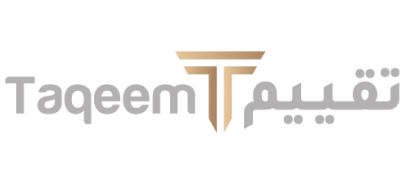BusinessWhereToFind
In most cases where a business valuation is required, it is critical that the value be conducted by professionals. Tax assessment disputes are unlikely to succeed without a professional value; in cases having legal repercussions, only a complete appraisal compiled by a qualified valuation specialist would withstand scrutiny. However, there are several instances where doing your own business valuation computations might be beneficial. For example, a small business owner who plans to retire in a few years would wish to gain a general notion of the value of his company to aid in personal financial planning for his retirement years; in this scenario, a DIY valuation is a good option. We’ll look at how to calculate the estimated value of your firm in this post, as well as a list of business valuation resources that may be useful.
Determining The Valuation Method To Use
Start with the financial records to get a reasonable value for any business. Download our free Business Valuation Checklist, which contains a detailed list of the data you’ll need to conduct a valuation.
After you’ve gathered all of the financial data you’ll need to compute a value, you’ll need to decide which valuation methods are the most appropriate. The three primary methods of valuation—market, cost, and income—each have their own set of benefits and drawbacks.
Market approach
When valuing the complete commercial enterprise, the market technique is the best method of comparison. The comparison is based on any publicly traded stock, public or private transactions, or equity-funded venture capital valuations that are available. The fact that the Subject Company is private and tiny complicates applying the market technique in our case. The quality of transaction data is critical, yet there may be no similar data available. If any can be found, the next step is to determine the best metrics for organizations that are similar to the Subject Company, such as: price-to-earnings, price-to-sales, price-to-book, and price-to-free cash flow, and use the earnings before interest, taxes, depreciation, and amortization (EBITDA) multiple to calculate the subject company’s enterprise value.
Because each company is different in some manner, the market approach can only produce an estimate of worth. However, if the data required to complete a market approach valuation is available, that may be sufficient for our scenario.
Cost approach
The cost approach relies on the principle of substitution, and is best to value individual parts of a business enterprise. The cost approach is performed by calculating what it would cost to re-create or replace the Subject Company from the ground up, using current values for materials, labor, and equipment. If the Subject Company owns a manufacturing plant, for example, the cost approach would involve calculating what it would cost in materials and labor to construct a plant designed for the same purpose and the cost of the machinery needed for manufacturing the product. Once the replacement cost for all assets has been calculated, it is adjusted for depreciation to arrive at the current replacement value less depreciation for the Subject Company.
The main disadvantage of the cost approach is that it is difficult to value intangible assets such as goodwill and customer connections. Furthermore, the cost technique necessitates a large amount of reliable data and calculations, as well as a significant amount of time to complete. While it provides a more reliable indication of worth than the market approach, it only provides a value for the company’s tangible assets because it is based on current market costs rather than comparisons to companies that may differ in crucial ways. A corporation that is still operating is likely to be worth much more than the total of its physical assets.
Income approach
The income approach is the best approach to value an income-producing enterprise. It is based on the premise that the Subject Company’s present value is equal to the present value of the future cash flows it will provide through its remaining life. To calculate the value using the income approach, first estimate the future cash flows and determine the proper cost of capital that matches the risk of the cash flows being valued. This begins with a thorough analysis of the business enterprise, then the calculation of expected changes in operating expenses, taxes, and working capital, and free cash flow. Finally, calculate the weighted average cost of capital (WACC), and calculate the present value of the estimated future cash flows.
The most significant disadvantage of using the income approach to value a private firm is that the determined value is highly dependent on assumptions about the projection period, cost of capital, and terminal growth rate. Small modifications to these essential assumptions can have a big impact on the resulting value, which is why predictions are so difficult.
The best strategy or ways for determining the worth of your company will be determined by the goal of the valuation, the availability of relevant data, your ability to appropriately apply the data in calculations, and your ability to generate credible projections.
Business Valuation Resources
The following business valuation resources may be useful in performing a valuation of your business:
Professional business valuation organizations
Several professional business valuation organizations provide training and certification to their members. We discussed the conditions for certification by several organizations in a previous article. If you’re undertaking a business valuation, these organizations’ publications and other business valuation resources may be useful.
- American Society of Appraisers (ASA): ASA certification is considered the gold standard for business appraisers, requiring the most experience and education. The Society awards the Accredited Senior Appraiser (ASA) credential.
- CFA Institute: The CFA Institute awards the Chartered Financial Analyst (CFA) credential. The CFA designation goes beyond business valuation to include portfolio management and other areas of finance and valuation.
- National Association of Certified Valuators and Analysts (NACVA): NACVA credentials can be attained by anyone with a CPA or business degree who has substantial business valuation experience and passes the CVA exam. Those who meet the requirements are awarded the Certified Valuation Analyst (CVA) designation.
Professional standards organizations
- The Appraisal Foundation: The Foundation publishes the Uniform Standards of Professional Appraisal Practice (USPAP) annually.
- Financial Accounting Standards Board (FASB): FASB promulgates and publishes financial accounting and reporting standards. FASB statements of particular interest for business valuation are SFAS 142 (Goodwill and Other Intangible Assets) and SFAS 141 (Business Combinations).
- International Accounting Standards Committee Foundation (IFRS): The IFRS promulgates and publishes international financial reporting standards.
- International Valuation Standards Council (IVSC): The IVSC is a non-profit that formulates and publishes the International Valuation Standards for valuation of real property and businesses.
Market analysis resources
- Moody’s economy.com: Moody’s is a good source for industry statistics, forecast data, and broad economic analysis.
- SEC EDGAR database: Business sales statistics, merger and acquisition activity filings, and data on acquisitions of private firms by public companies can all be found in the EDGAR database.
Government resources
Key economic and demographic data compiled and published by U.S. government agencies can be found on the following agency websites:
- Bureau of Economic Analysis (BEA): This subunit of the U.S. Department of Commerce collects, analyzes, and publishes regional and national economic statistics.
- Bureau of Labor Statistics (BLS): The BLS is a subunit of the U.S. Department of Labor, and compiles information about employment, compensation, and industry outlook data.
- U.S. Census Bureau: The Census Bureau collects and publishes key demographic, economic, and housing data.
- Internal Revenue Service (IRS): The IRS publishes guidelines and rulings for business valuation.
- Securities and Exchange Commission (SEC): The SEC maintains public company filings in the EDGAR database, as well as filings on tender offers and mergers and acquisitions of private companies.
Valentiam also maintains a library of free business valuation resources, including the Business Valuation Checklist you’ll need to start your valuation of your business.
It’s crucial to have a sound understanding of the value of your business assets. Incorrect assumptions about value can cost your business if they lead to the adoption of misguided strategies.
The world’s leading corporations trust Taqeem specialists to provide expert value opinions for all business assets—and we can do the same for your business. Talk to us about your unique situation; we can help you determine the value of your company and strategies to enhance it.

